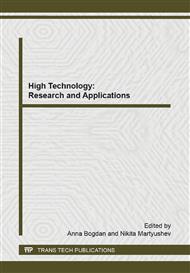p.602
p.608
p.614
p.620
p.625
p.633
p.638
p.642
p.646
Viscoelastoplastic Model of FCC Monocrystals Deformation: Identification of Parameters
Abstract:
This article considers the description of elastoviscoplastic deformation for FCC crystallite. The deformation model for crystallite is necessary for building the model of a polycrystal. The elastoviscoplastic model is used to consider the crystalline structure using crystalline directions and also using the continuum mechanics approach – averaging by the representative macrovolume. FCC crystalline plastic deformations are considered as a slip of dislocations on slipping systems. А pure fcc cuprum is used аs a material. The algorithm for description of the proposed measures of the stress-strain state is considered, and hardening laws are analyzed. The problem of stochastic optimization of inelastic crystalline deformation is solved. Hardening modules and initial critical stresses are identified and accepted stochastically. The squared difference between the computational and experimental stress intensity for several points have been used as the target function. To solve the optimizing problem, the authors have used the min-max model considering the solution with the least favorable conditions for controlling vector. Nelder-Mead method (numerical method for direct search) is applied to solve the optimization problem. We have provided a description and analysis of the numerical results, recommendations for choosing the values of the identified parameters.
Info:
Periodical:
Pages:
625-630
Citation:
Online since:
September 2014
Authors:
Price:
Сopyright:
© 2014 Trans Tech Publications Ltd. All Rights Reserved
Share:
Citation:


